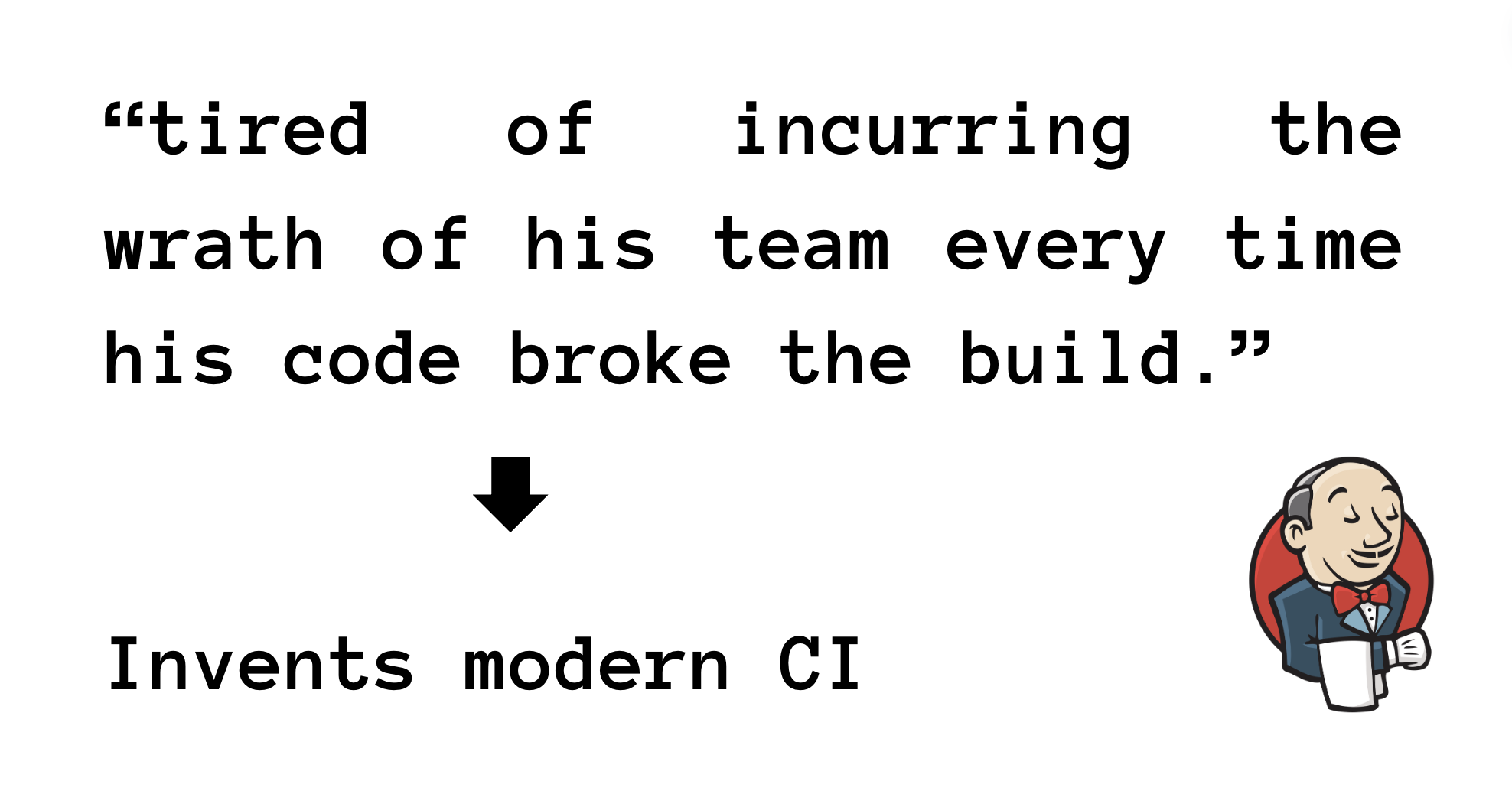116
From the 80's to 2024 - how CI tests were invented and optimized
graphite.devWhile Google started automating its build tests in 2003, the engineering industry took longer to do the same. But automation was sorely needed: Software systems are growing larger and ever more complex… To make matters worse, new versions are pushed to users frequently, sometimes multiple times each day. This is a far cry from the world of shrink-wrapped software that saw updates only once or twice a year. The ability for humans to manually validate every behavior in a system has been unable to keep pace with the explosion of features and platforms in most software. - Software Engineering at Googlehttps://abseil.io/resources/swe-book/html/ch11.html#testing_overview Add author/source Sun Microsystem’s engineer, Kohsuke Kawaguchi, was key to ushering in the next era of testing. In 2004, he created “Hudson”https://community.jenkins.io/t/lets-thank-kohsuke-the-creator-of-jenkins/168 (later renamed to Jenkins in fun Oracle drama). At his day job, Kohsuke “got tired of incurring the wrath of his team every time his code broke the build.” He could have manually triggered tests before each code contribution, but instead, Kohsuke chose the classic engineering solution and created an automated program. The Hudson tool acted as a long-lived test server that could automatically verify each code change as it integrated into the codebase.



Jenkins is not a modern CI. It is a historical milestone, but if you read an article you should see that it was replaced by other tools. Now I don’t recommend considering Jenkins for new projects. It it fast to set up but extremely hard to support and full of old bugs and legacy code. Writing Groovy pipelines is much harder than pipelines in gitlab/github/forgejo/etc. Tens of plugins you have to use even for simple tasks have inconsistent syntax, many of them are buggy, they often become unsupported or deprecated. This all consumes lot of resourses: I maintain an instance that eats ~4G of RAM being idle.
The feeling of reading through those crazy JVM stack traces with classes named “hudson” from the Jenikins prototype… I shudder! Well done for pushing through it all!
Jenkins was called Hudson already a long time after being a prototype. We used it productively already.
I have a soft spot for Jenkins because it was the first integration tool I ever used fresh out of college.
But today I want to stab the server because a job started failing randomly with a permission error when trying to copy a file.
I have a soft spot for Jenkins because it was the first integration tool I ever used fresh out of college.
But today I want to stab the server because a job started failing randomly with a permission error when trying to copy a file.